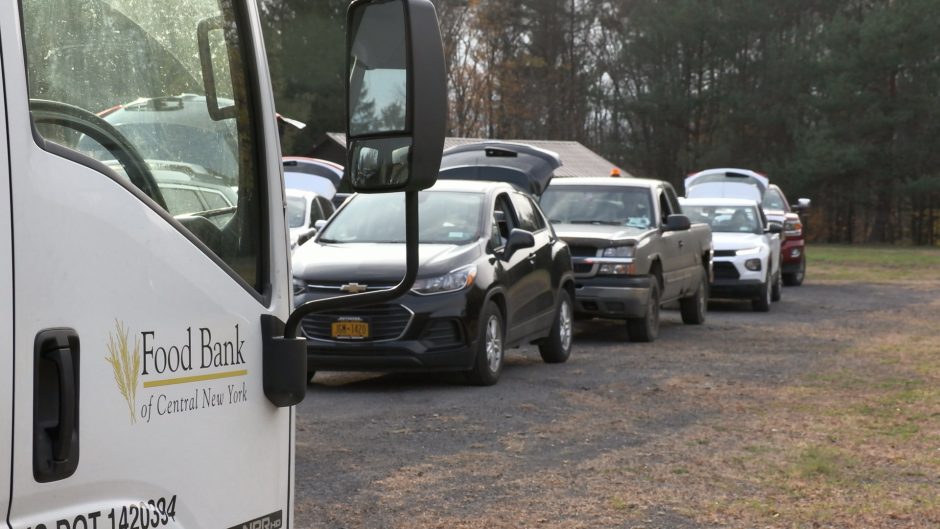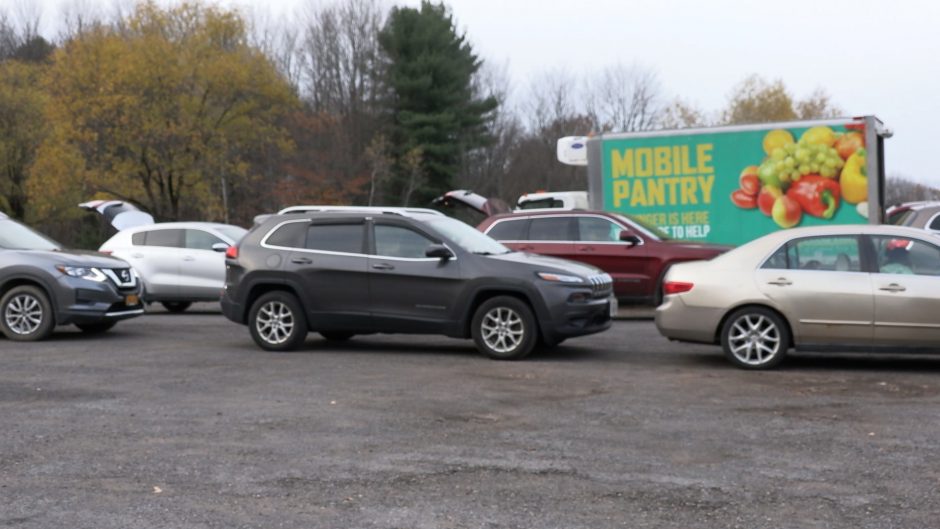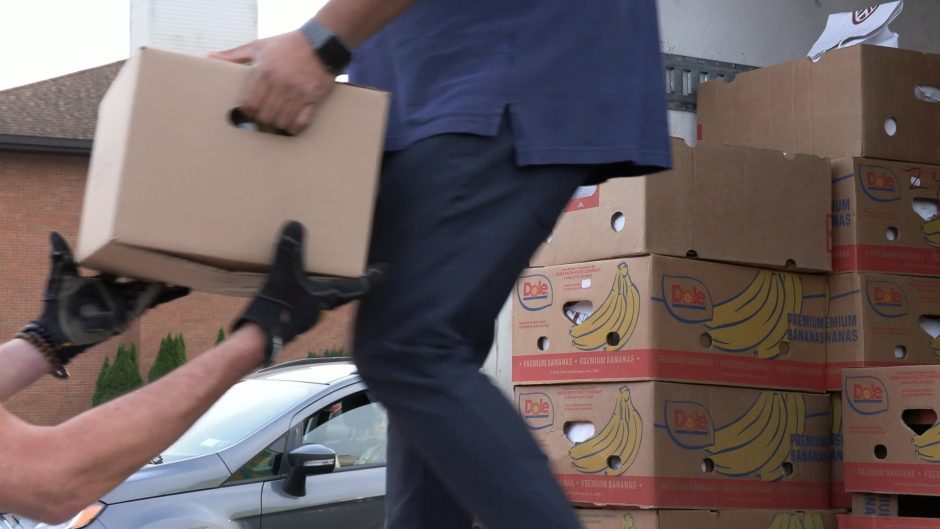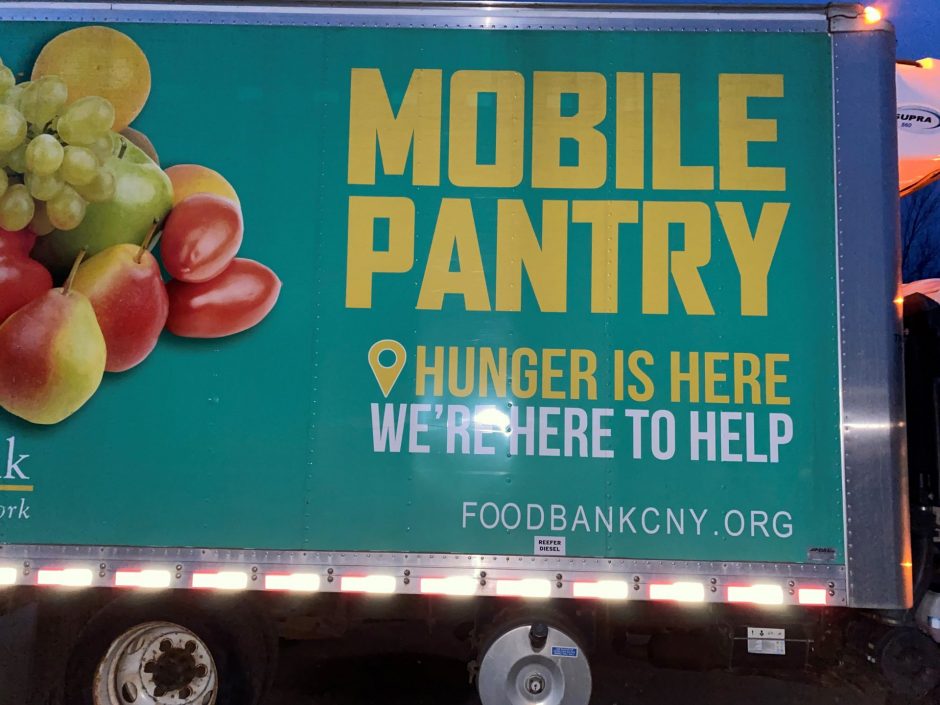PALERMO, NY – The Food Bank of Central New York held a distribution event at the Palermo United Methodist Church in Palermo, NY on Tuesday, November 9, 2021. At the event 91 households received meals. Each box of food contained both perishable and non-perishable items, most notably fresh produce.
Providing fresh produce is one of the food bank’s top priorities because it both helps customers get more nutritious options in their diets and gives them the chance to put that money towards other financial priorities.
“[I’ll] pay my fuel bill,” said Gene Kiles. [I’ll] pay my electric bill and won’t get behind.”
Fresh fruits and vegetables are the most expensive items in the grocery. Which means that many food bank customers cannot afford them on their usual budgets or, if they can, those purchases have to come at the expense of something else. Usually another essential, such as heating bills or rent.
“[They] stretch their dollars,” said Renzo Quesada. “That they have to make it a little longer to go through the month…[it’s] a little easier without being very, very hungry.”
However, making sure people not only have stable access to food but that the food in question contain the proper nutrients is particularly difficult because of food safety regulations that govern certain donations. Private, third-party donations, usually made by individual people, can only consist of non-perishable food items because the food bank cannot guarantee that perishable items were properly stored prior to being donated. Which means that even if private citizens wanted to, they couldn’t donate fruits, vegetables, and dairy to the food bank. So, as a result, Quesada and the Food Bank of Central New York have to source produce from grocery stores and manufacturers. Sometimes, even resorting to buying the food directly from local farmers with funds made available via monetary donations.
Despite the added red tape for perishable food the Food Bank distributed 5.3 million pounds of produce and 2.5 million pounds of dairy products in 2020. Under Quesada’s watch the Mobile Pantry brought on three volunteers to help with distribution. While expanding its scope from one county to eight and from one event per month to 22.
To receive food customers can arrive at each distribution events’ respective location in their cars. Once in line, Quesada and his volunteers load the car with food quantities based on household number and size. There are no financial prerequisites that must be met in order to receive assistance; meals are available to anyone who attends an event.
“This is a very rewarding mission and service that we do,” said Quesada.








